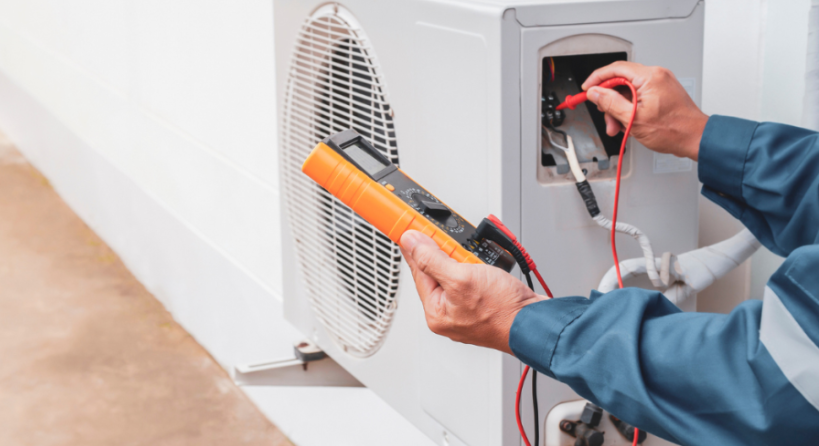
HVAC Maintenance & Repairs
Essential Guide to HVAC Maintenance and Repair: DIY Tips & Common Issues
HVAC mantenance and repair is crucial for ensuring it operates efficiently and lasts as long as possible. This guide will walk you through common issues, DIY repairs, and maintenance tips to keep your system in top shape. Whether you’re dealing with minor fixes or more significant repairs, understanding the basics can help you make informed decisions and maintain a comfortable home environment.
Understanding the Basics of HVAC Maintenance and Repair
Firstly, HVAC systems are intricate machines with many components working together to keep your indoor climate comfortable. Over time, parts can wear out and require repair. Recognizing common issues, such as thermostat malfunctions or clogged filters, can save you both time and money. Although some problems might necessitate professional intervention, many can be addressed by homeowners with the right tools and knowledge.
HVAC Maintenance and Repair: Common HVAC Components Prone to Wear and Tear
The initial step in HVAC repair involves identifying which components are likely to fail. Common parts that frequently need attention include:
- Thermostats: Malfunctioning thermostats can disrupt system operation. Therefore, check for correct settings and inspect wiring for any issues.
- Capacitors: These components provide the initial boost of energy to start the motors. They can fail over time, leading to erratic starts. Use a multimeter to test capacitors and replace them if necessary.
- Compressors: As critical components for cooling, compressors can fail due to electrical issues, refrigerant leaks, or general wear. While you can inspect for leaks or unusual noises, diagnosing compressor issues often requires professional assistance.
- Air Filters: Clogged filters restrict airflow and reduce efficiency. Thus, replace air filters every 1-3 months to maintain optimal performance and system health.
Signs You Need HVAC Repair: A Homeowner’s Checklist
Recognizing signs that your HVAC system needs repair can prevent minor issues from escalating into major problems. Watch out for the following symptoms:
- Unusual Noises: Sounds such as banging or squealing could indicate loose parts or motor issues. In this case, inspect moving parts for any signs of wear.
- Inconsistent Temperatures: Uneven heating or cooling might signal ductwork issues or a faulty thermostat. Consequently, check ducts for leaks and ensure the thermostat is functioning correctly.
- Frequent Cycling: Short cycling can result from a malfunctioning thermostat, an oversized system, or clogged filters. Verify that your system is appropriately sized and that the thermostat is calibrated properly.
- High Energy Bills: A sudden increase in energy costs may suggest a failing component. To avoid higher utility bills, address these issues promptly.
DIY HVAC Repair: Homeowner-Friendly Fixes
Many HVAC maintenance tasks are manageable for homeowners. Consider these practical DIY tips:
- Replacing Air Filters: Start by turning off your system, then remove the old filter and install a new one. Ensure that the new filter matches your system’s specifications for best results.
- Cleaning Coils: Dirt on evaporator and condenser coils can reduce efficiency. Therefore, turn off power, clean coils with a soft brush or coil cleaner, and avoid damaging the fins.
- Checking Thermostat Settings: Make sure your thermostat is set correctly for the current season. Additionally, replace batteries if needed to ensure proper functioning.
- Clearing Debris from Outdoor Units: Remove leaves and dirt from the outdoor condenser unit. Use a hose to gently clean, but be careful not to damage the fins or electrical components.
Advanced DIY Repairs: When You’re Ready to Tackle More
For homeowners comfortable with more complex tasks, try these advanced DIY repairs:
- Replacing Capacitors: If your system struggles to start, a faulty capacitor might be the issue. First, turn off the power, then discharge the capacitor, and replace it with one of the same specifications.
- Fixing Refrigerant Leaks: Although repairing refrigerant leaks is best left to professionals, you can identify leaks by looking for oily residue around components. Use a leak detector to pinpoint the location of the leaks.
- Duct Sealing: Leaky ducts can significantly reduce system efficiency. Seal small leaks using duct mastic or metal-backed tape and ensure that ducts are properly insulated to prevent energy loss.
Preventive Maintenance: Keeping Your HVAC System in Top Shape
Regular maintenance is key to extending the life of your HVAC system. Follow these preventive measures:
- Seasonal Inspections: Schedule inspections at least twice a year, ideally before the heating and cooling seasons. Check for signs of wear, clean components, and ensure everything operates smoothly.
- Lubricating Moving Parts: Apply lubricant to motors and fan bearings to reduce friction and prevent premature wear.
- Testing Safety Controls: Ensure that all safety controls, such as limit switches and pressure sensors, function correctly to avoid potential system damage.
Conclusion: Empowering Homeowners Through Knowledge
In conclusion, understanding HVAC maintenance and repair helps homeowners manage their systems effectively and save on professional services. While some tasks are suitable for DIY enthusiasts, others require specialized knowledge and tools. At Utah Climate Control, we encourage homeowners to stay informed about HVAC care and take an active role in their system’s maintenance. For more complex repairs or routine maintenance, contact us at 801-555-1234 or visit our website. We’re here to help you maintain your home’s comfort and efficiency year-round.


